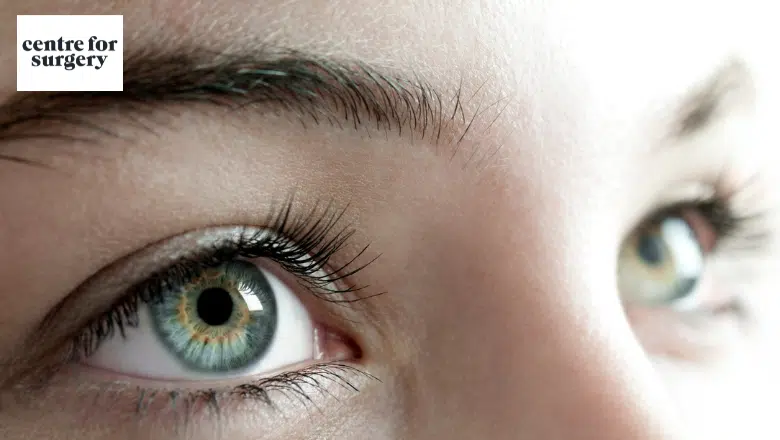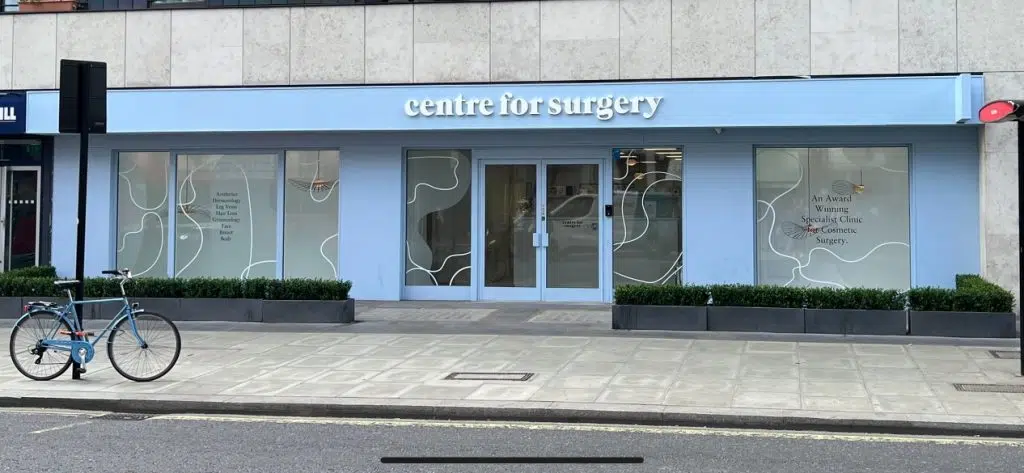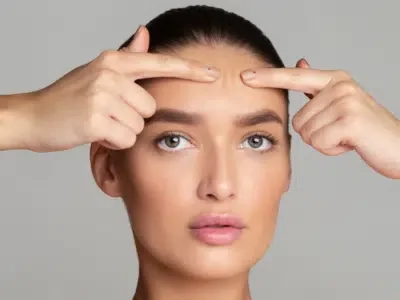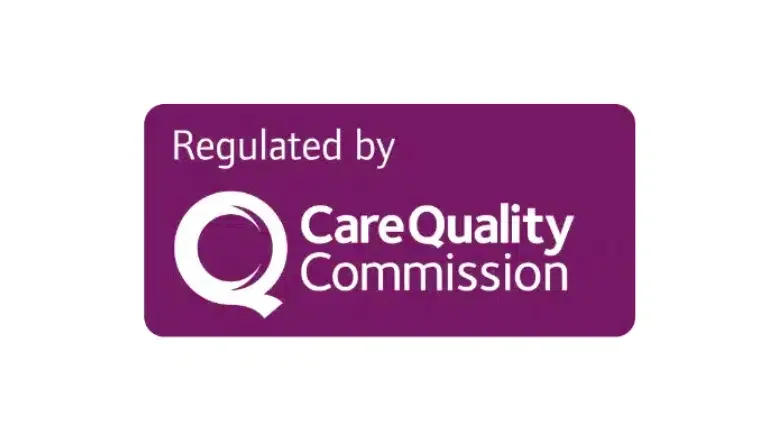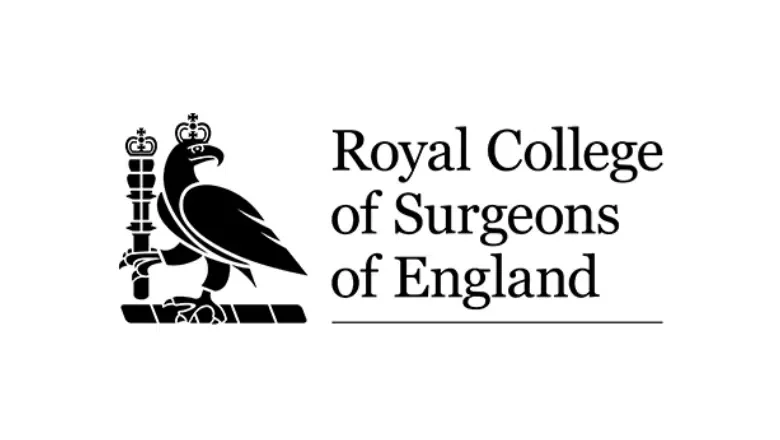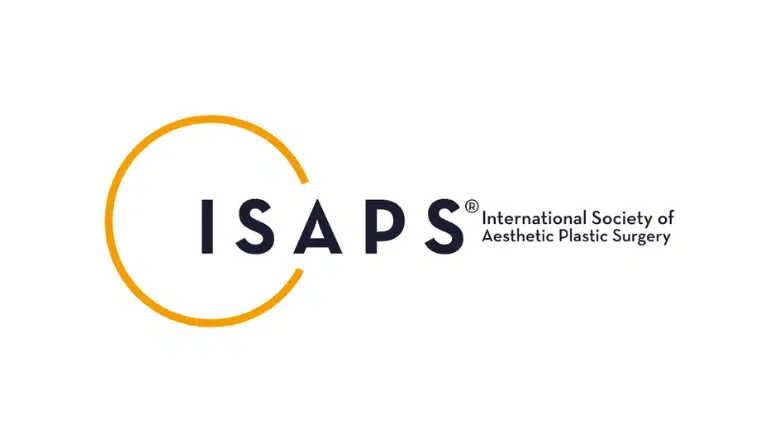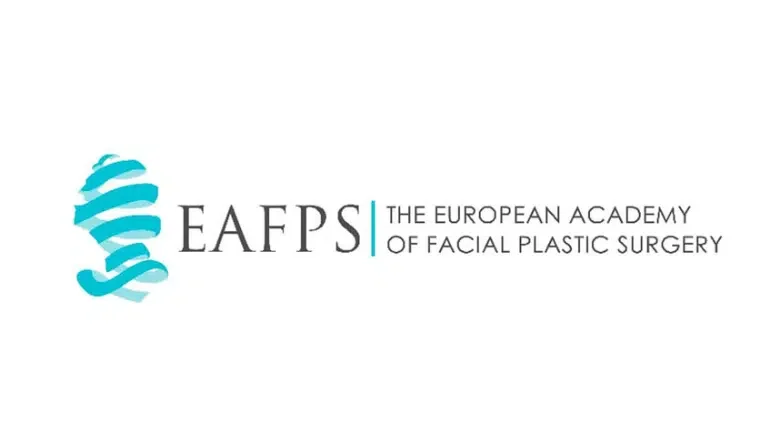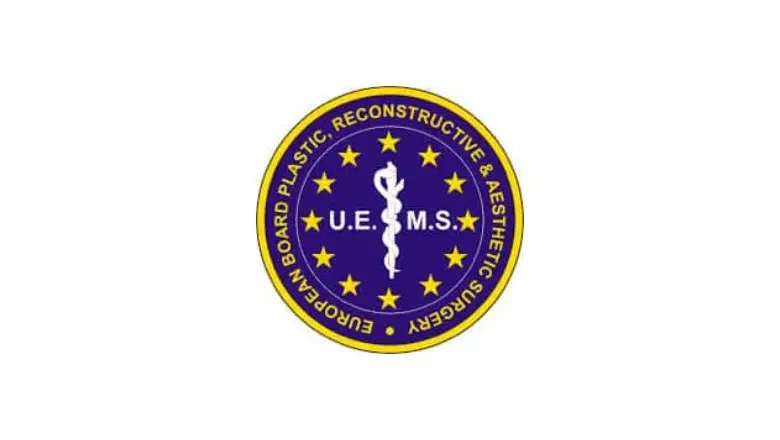Blepharoplasty, also known as eyelid lift surgery, can help people to achieve rejuvenated and refreshed eyes without looking constantly tired. Centre for Surgery is recognised as a leading UK expert in eyelid surgery, and here we answer your most commonly asked questions about all aspects of blepharoplasty surgery.
RELATED: Blepharoplasty (Eyelid Lift) Before & After Gallery
EYELID LIFT BENEFITS
What are the benefits of blepharoplasty?
Blepharoplasty, also known as eyelid surgery, is a procedure that improves the appearance of the eyelids by removing excess skin and fat. The procedure can be performed on the upper eyelids, lower eyelids, or both. The benefits of blepharoplasty include the following:
Improved vision
Excess skin on the upper eyelids can obstruct vision and make it difficult to see. Blepharoplasty can remove this skin, making it easier to see.
Younger, more refreshed appearance
Blepharoplasty can remove wrinkles and puffiness around the eyes, making you look more youthful and refreshed.
Enhanced self-confidence
The improved appearance of your eyelids can boost your self-confidence and self-esteem.
Long-lasting results
The results of blepharoplasty are long-lasting and can be permanent as long as you maintain a healthy lifestyle.
Minimal downtime and scarring
Blepharoplasty is a relatively safe and low-risk procedure. Recovery time is minimal, and scarring is usually minimal and hidden in the natural crease of the eyelid.
Can be combined with other procedures
Blepharoplasty can be combined with other cosmetic procedures such as facelift, brow lift, and laser resurfacing to enhance the overall results.
RELATED: What Conditions Can Eyelid Surgery Treat?
Can eyelid surgery make me look younger?
Eyelid surgery is highly effective for eliminating tired-looking eyes. The eyelids are tightened, and bulging fat is removed. This helps to get rid of puffy eyes and eyelid wrinkles. Most women find they can achieve more striking-looking eyes when combined with make-up.
Can eyelid surgery enhance appearance?
Eyelid surgery can significantly improve the appearance of the upper and lower eyelids to make you appear younger-looking and refreshed.
Can the shape of the eyes be affected by blepharoplasty?
Blepharoplasty surgery is not designed to alter the shape of the eye. A lateral canthoplasty, also known as almond eye surgery, can alter the position of the lateral canthus, which may slightly change the shape of the outer eye for a lifted appearance.
Will eyelid surgery make my eyes look bigger?
Eyelid surgery is not aimed at altering the actual shape of the eyes, but it can give the impression of bigger eyes with the removal of excess skin and fat.
Can blepharoplasty surgery get rid of eye wrinkles?
Wrinkles around the eyes can be eliminated with blepharoplasty as an effective anti-ageing treatment.
What are hooded eyelids?
Hooded eyelids, also known as “droopy eyelids” or “ptotic eyelids,” are characterised by excess skin and/or fat that droops over the upper eyelid and can sometimes cover the eyelashes. This can create the appearance of a hood or veil over the eyelid, which can make the eyes look tired or aged. Hooded eyelids can be caused by a variety of factors, including genetics, ageing, and certain medical conditions.
This condition may affect one or both eyes and can be caused by the natural ageing process and the loss of elasticity in the skin, or due to a medical condition such as ptosis, which is a drooping of the upper eyelid due to muscle or nerve problems. In some cases, hooded eyelids can also be caused by a congenital defect, or can be the result of a previous injury or surgery to the eyelid area.
Hooded eyelids can be corrected with a surgical procedure known as blepharoplasty, which is a procedure that removes the excess skin and/or fat, and tightens the muscles and tissues of the eyelid. This can help to improve the appearance of the eyelids and make the eyes look more open, alert and refreshed.
What are bags under the eyes?
Bags under the eyes refer to puffiness or swelling that can occur in the lower eyelid area. They can be caused by various factors, including ageing, genetics, lack of sleep, diet, and certain medical conditions. Bags under the eyes can give the appearance of tiredness and can make the eyes look older.
The puffiness is caused by the accumulation of fluid in the soft tissue under the eyes. As we age, the skin around our eyes becomes thinner, and the fat that helps to support the eyes can migrate down, creating a puffy appearance. Genetics, sun exposure and smoking, alcohol consumption and certain medical conditions such as hypothyroidism, allergies or sinus problems can also contribute to the development of bags under the eyes.
Bags under the eyes can be treated through various methods, including lifestyle changes, such as getting enough sleep, staying hydrated, eating a healthy diet, and avoiding alcohol, caffeine, and tobacco. Topical creams and gels that contain ingredients such as caffeine and retinoids can also help to reduce puffiness. In more severe cases, surgery, such as lower blepharoplasty, may be considered to remove excess skin and fat.
Can blepharoplasty get rid of dark circles under the eyes?
A lower blepharoplasty or lower eyelid surgery can help to get rid of dark circles under the eyes if they are caused by herniated fat. However, eyelid surgery cannot improve excess pigmentation, which causes dark circles.
RELATED: Bags Under The Eyes and Dark Circles – Causes and Treatments
Does a brow lift help hooded eyes?
A brow lift can help improve the appearance of hooded eyes to some extent. Hooded eyes occur when excess skin on the upper eyelid droops over the eye, which can give the appearance of a heavier and tired-looking eye.
A brow lift is a surgical procedure that can help raise the position of the eyebrows and forehead to a more youthful position. This can help reduce the appearance of hooded eyes by lifting the excess skin and soft tissue around the upper eyelids.
A brow lift may not be able to fully address the issue of hooded eyes on its own, particularly in cases where the hooding is caused by excess skin on the upper eyelids. In some cases, a combination of a brow lift and upper blepharoplasty (eyelid surgery) may be recommended to achieve optimal results.
Is laser skin resurfacing better than eyelid surgery?
Laser skin resurfacing using Erbium YAG or CO2 laser can be useful in selected cases of patients who have mild to moderate signs of ageing affecting the eyes. Laser resurfacing cannot, however, entirely get rid of droopy or sagging eyelids. Most patients can achieve effective correction of age-related eyelid changes with a blepharoplasty.
EYELID LIFT – SUITABLE CANDIDATES FOR EYELID SURGERY
What are the different types of blepharoplasty or eyelid surgery?
There are several different types of blepharoplasty surgery, including:
- Upper eyelid surgery
- Lower eyelid surgery
- Combined upper and lower eyelid surgery
- Lateral canthoplasty
- Asian blepharoplasty (double eyelid surgery)
- Laser blepharoplasty
- Revision blepharoplasty
What are the common reasons for getting an eye lift?
Patients who have puffy eyes, bags under the eyes, droopy eyelids, eyelid wrinkles and loose skin can achieve effective correction with eyelid lift surgery.
What is the best age to have blepharoplasty surgery?
Although there is no ideal age to have eyelid surgery, most people who choose to have a blepharoplasty are aged over 40.
RELATED: What Is The Ideal Age for Blepharoplasty?
Am I suitable for eyelid lift surgery?
Ideal candidates for blepharoplasty include:
- Patients wishing to appear more youthful and refreshed
- Periocular fine lines and wrinkles
- Drooping and sagging eyelids
Can a man have eye lift surgery?
Yes, men can have eyelid lift surgery (blepharoplasty) just like women. In fact, eyelid surgery is becoming increasingly popular among men who want to improve the appearance of their eyes and achieve a more youthful, alert, and refreshed look.
As men age, they may develop drooping or sagging eyelids, bags under the eyes, and other signs of facial ageing. Eyelid surgery can help address these issues by removing excess skin and fat from the eyelids, tightening the skin, and smoothing out wrinkles and fine lines around the eyes.
Male blepharoplasty is typically performed as an outpatient procedure under local anaesthesia or sedation, and recovery time is generally minimal. Men can expect to see a noticeable improvement in the appearance of their eyes and overall facial rejuvenation after the procedure.
RELATED: Male Eyelid Lift FAQs – Questions about Blepharoplasty for Men
HOW TO PREPARE FOR EYELID SURGERY
What is the best way to prepare for an eyelid lift?
Ideal preparation for a blepharoplasty involves stopping any medicines containing aspirin which could increase the risk of bleeding during and after surgery. Smoking should be stopped at least four weeks before and after surgery to improve healing. You should avoid excessive sunlight exposure before and after surgery for at least two weeks. You will need to arrange for a responsible adult escort to pick you up after surgery and take you home. You will need to follow our standard preoperative fasting instructions on the day of your surgery.
What things should I pack with me to bring on the day of eyelid surgery?
Make sure to wear loose and comfortable clothing which can be fastened from the front. Avoid wearing T-shirts or any item of clothing that has to be removed from your head. Bring cold packs to reduce swelling after surgery and equipment to store your contact lenses.
EYELID SURGERY PROCEDURE – BLEPHAROPLASTY SURGERY
What is the difference between eyelid surgery and blepharoplasty?
There is no difference between eyelid surgery and blepharoplasty. “Eyelid surgery” is a general term that refers to any surgical procedure performed on the eyelids, while “blepharoplasty” specifically refers to the surgical procedure that removes excess skin and fat from the eyelids to create a more youthful and refreshed appearance.
During a blepharoplasty procedure, the surgeon will make small incisions along the natural creases of the eyelids to remove excess skin and fat, tighten the skin, and smooth out wrinkles and fine lines. The incisions are typically very small and heal quickly with minimal scarring.
Eyelid surgery can refer to other procedures that are not specifically blepharoplasty, such as ptosis surgery to correct droopy eyelids, or reconstructive surgery to repair damage to the eyelids caused by injury or disease.
Is blepharoplasty a major surgery?
Blepharoplasty (eyelid surgery) is generally considered a minor or moderate surgical procedure, depending on the extent of the surgery. It is typically performed as an outpatient procedure under local anaesthesia or IV sedation, and the recovery time is relatively short compared to more invasive surgeries.
During the procedure, the surgeon will make small incisions along the natural creases of the eyelids to remove excess skin and fat, tighten the skin, and smooth out wrinkles and fine lines. The incisions are typically very small and heal quickly with minimal scarring.
However, like any surgical procedure, blepharoplasty still carries a risk of potential complications. These may include infection, bleeding, scarring, asymmetry, or changes in vision. The risk of these complications can be minimised by choosing a qualified surgeon with experience in performing eyelid surgery and following all pre-operative and post-operative instructions.
What type of anaesthesia is used for eyelid surgery?
Eyelid surgery can be performed using either local anaesthesia or general anaesthesia. Upper blepharoplasty can be comfortably performed with a local anaesthetic. Lower blepharoplasty or combined upper and lower eyelid surgery is best performed under a general anaesthetic for your comfort.
Will I be awake during eyelid surgery?
Upper eyelid surgery can be performed with a local anaesthetic, which means you will be awake although unable to feel any discomfort. You will be placed under general anaesthesia for lower blepharoplasty or combined upper and lower blepharoplasty.
When is a general anaesthetic recommended for blepharoplasty?
A general anaesthetic is preferred for lower eyelid surgery or combined upper and lower eyelid surgery.
Can I have eyelid surgery on one eye only?
If you have a droopy eyelid on one side only, a unilateral or one-sided blepharoplasty can be performed to correct this.
How long does eyelid surgery take to perform?
Upper eyelid surgery takes approximately 30 minutes to perform. Lower eyelid surgery takes approximately 60 minutes. Combined upper and lower blepharoplasty takes approximately two hours.
What are the steps in an upper blepharoplasty?
Upper blepharoplasty, also known as eyelid surgery, is a surgical procedure that is performed to improve the appearance of the upper eyelids. The procedure involves removing excess skin, fat, and muscle from the upper eyelids to create a more youthful and refreshed appearance.
The steps in an upper blepharoplasty procedure typically include the following:
Anaesthesia
The procedure is usually performed under local anaesthesia, although general anaesthesia can also be used.
Incision
The surgeon will make an incision in the natural crease of the upper eyelid along the lash line, to minimise scarring. The incision is made in a way to preserve the natural contour of the eyelid.
Removing Excess Tissue
The surgeon will remove any excess skin, fat, and muscle from the upper eyelid to improve the appearance and reduce puffiness.
Closure
The incision will be closed with sutures or skin glue, and the skin will be dressed with a bandage.
What are the steps in a lower blepharoplasty?
The steps in a lower blepharoplasty procedure typically include:
- Anaesthesia: The procedure is usually performed under local anaesthesia, although general anaesthesia can also be used.
- Incision: The surgeon will make an incision just below the lower lashes or, in some cases, inside the lower eyelid to minimize scarring. The incision is made in a way to preserve the natural contour of the eyelid.
- Removing Excess Tissue: The surgeon will remove any excess skin, fat, and muscle from the lower eyelid to improve the appearance and reduce puffiness.
- Repositioning Fat: In some cases, the surgeon may reposition the fat pads in the lower eyelid to restore a more youthful appearance.
- Closure: The incision will be closed with sutures or skin glue, and the skin will be dressed with a bandage.
- Recovery: The recovery time after a lower blepharoplasty procedure typically takes around two weeks. During this time, the patient should avoid strenuous activities and avoid exposing the incision site to sunlight or other sources of UV light.
What is Canthoplasty?
Canthoplasty is a surgical procedure that is performed to correct issues with the lateral canthus, which is the corner of the eye where the upper and lower eyelids meet. It is also known as lateral canthoplasty or canthal tightening.
The procedure can be done for both cosmetic and medical reasons, such as to lift drooping lower eyelids, correct eyelid malposition, or improve the appearance of the eyes. Canthoplasty can be done on its own or combined with other eyelid surgery procedures, such as upper and lower blepharoplasty.
The procedure typically involves making an incision in the lateral canthus (corner of the eye) and repositioning or tightening the tissue in the area to create a more youthful and refreshed appearance. The incision is usually made in the natural crease of the eyelid in a way that minimises scarring.
The recovery time after a canthoplasty procedure typically takes around two weeks. During this time, the patient should avoid strenuous activities and avoid exposing the incision site to sunlight or other sources of UV light.
RELATED: What does eyelid surgery involve?
RECOVERY AFTER EYELID SURGERY – BLEPHAROPLASTY RECOVERY
What can I expect to feel after eyelid surgery?
Most patients will notice their eyelids appear bruised and swollen for the first week after surgery. After approximately two weeks, bruising and swelling will have mostly disappeared, and you will be able to return to most types of work.
RELATED: How to reduce Bruising and Swelling after Eyelid Surgery
How long does it take to recover after blepharoplasty?
Recovery time after eyelid surgery, also known as blepharoplasty, can vary depending on the individual and the type of procedure performed. Typically, patients can return to work and normal activities within a week or two after the surgery, but full recovery may take several weeks.
In the first few days following the procedure, patients may experience swelling, bruising, and redness around the eyes, which can be managed with cold compresses and over-the-counter pain medication. Patients should avoid strenuous activity and follow the postoperative instructions provided by the surgeon.
The incisions made during the surgery will be closed with stitches or surgical tape, and these will usually be removed within one to two weeks after the surgery. The incision lines will then continue to heal and fade over the next several weeks.
What is the quickest way to recover after blepharoplasty surgery?
You should follow your surgeon’s post-operative care instructions to ensure a speedy recovery after eyelid surgery. Get plenty of rest to allow proper healing, and avoid smoking for at least four weeks after surgery. You must avoid any vigorous activity, including going to the gym and avoid excessive sunlight exposure. Avoid looking at a computer screen or watching TV to avoid eyestrain. Eat a healthy diet and keep well hydrated by drinking plenty of water.
RELATED: Eyelid surgery recovery – top tips
Can I sleep on my side after eyelid lift surgery?
You must sleep on your back with your head in an elevated position for at least one week after surgery.
Can I look at a computer screen or watch TV after eyelid surgery?
You should avoid excessive computer screen use and minimise watching TV as this can cause significant eye strain.
When can I apply makeup after blepharoplasty?
Make-up can be safely applied after approximately three weeks following surgery. Applying make-up too early may irritate the eyes, leading to a delayed recovery.
How long does it take to heal after upper blepharoplasty?
It takes approximately 3 to 4 weeks for most bruising and swelling to disappear after upper eyelid surgery. Most people can return to everyday activities after two weeks.
When can I drive a car after upper blepharoplasty?
You should avoid driving a car for at least 72 hours after surgery.
How long does eyelid surgery recovery take?
Recovery after blepharoplasty requires at least 3 to 4 weeks for full healing to occur.
How long will I feel tightness in the eyes after blepharoplasty?
It is normal to feel tightness in the eyes after surgery. This sensation usually lasts up to 4 weeks after eyelid surgery.
What should I avoid after eyelid surgery?
Certain things should be avoided after surgery, including lifting heavy objects and excessive bending over. Vigorous exercises, including going to the gym, should also be avoided. You must sleep on your back with your head elevated for the first two weeks after surgery. Excessive coughing and sneezing can also increase pressure in the eyelid region.
When can I wash my hair after eyelid surgery?
Washing your hair can occur after week one following surgery.
What are the best foods to eat after eye lift surgery?
You should focus on eating foods rich in protein, vitamin C and zinc. Avoid excessive junk food and highly processed foods.
Why should I avoid smoking and drinking after eyelid surgery?
Smoking should be avoided for at least four weeks after surgery to minimise the risk of wound-healing complications.
When can I shower after blepharoplasty?
You may safely shower after surgery approximately three days after the procedure, although you should avoid getting your face wet for at least one week. Only warm water should be used to reduce the risk of prolonged swimming.
When can I go back to work after a blepharoplasty?
Most people can return to desk-based work after one week. If you have a physically demanding occupation, we would recommend at least 2 to 3 weeks off work.
When is the best time to start wearing contact lenses after eyelid surgery?
Contact lenses should be avoided for at least three weeks after eyelid surgery as premature application can affect eyelid healing.
How can I minimise scars after eyelid surgery?
Minimising scarring after eyelid surgery is straightforward. Your surgeon will position incisions within the natural curves and skin folds of the eyelids. Over time, scars will gradually turn faint white. Once the incisions have fully healed, silicone gel can be applied to the scars after four weeks.
RELATED: What do blepharoplasty scars look like?
When will I begin to see the results of blepharoplasty surgery?
Eyelid surgery results should begin to look noticeable two weeks after surgery. The results will continue to look better after six weeks once most of the swelling has disappeared.
EYELID LIFT RESULTS
How long do blepharoplasty results last?
Upper eyelid surgery can produce results that can last between five and ten years. Lower blepharoplasty may produce results that can last your entire lifetime. It is important to bear in mind that the natural ageing process is not stopped with surgery, and the face will continue to show signs of ageing over time, which may lead to the recurrence of eyelid laxity.
Is eyelid surgery permanent?
Eyelid surgery, also known as blepharoplasty, is a permanent procedure that removes excess skin, fat and muscle from the upper and lower eyelids. The goal of the surgery is to improve the appearance of the eyes and make them look more youthful, open and refreshed.
However, it’s important to keep in mind that the ageing process is an ongoing one, and while surgery can improve the appearance of the eyes, it cannot stop the ageing process. The effects of the surgery can be long-lasting, but the skin will continue to age, and the eyes may eventually return to their pre-surgical appearance.
RELATED: Is eyelid surgery worth it?
RISKS OF BLEPHAROPLASTY SURGERY
What are the common blepharoplasty risks?
Blepharoplasty, also known as eyelid surgery, is a relatively safe procedure, but as with any surgery, there are potential risks and complications that should be considered before undergoing the procedure. Some of the common risks associated with blepharoplasty include the following:
- Infection: As with any surgical procedure, there is a risk of infection, which can be treated with antibiotics.
- Bleeding: There is a risk of bleeding during and after the surgery, which can be controlled with pressure and medication.
- Scarring: There is a risk of scarring, which can be minimized by following the surgeon’s postoperative instructions.
- Dry eyes: This can be caused by the surgery and can be treated with eye drops or lubricants.
- Changes in vision: In rare cases, the surgery may cause vision changes, which can be temporary or permanent.
- Asymmetry: The procedure may not result in perfect symmetry, and some asymmetry may persist.
- Unsatisfied result: In some cases, the patient may not be satisfied with the result of the surgery.
Can droopy eyelids and eye bags come back after eyelid surgery?
Expertly performed blepharoplasty surgery can produce results that can last in excess of ten years as long as patients maintain a healthy lifestyle, which includes avoiding smoking and minimising excessive sunlight exposure.
RELATED: Do Eye Bags Come Back After Surgery?
Is eyelid surgery painful?
Eyelid surgery, also known as blepharoplasty, is typically performed under local anaesthesia or IV sedation, which means that the patient is awake but relaxed and may not feel pain during the procedure. The procedure involves the removal of excess skin and/or fat, and the tightening of the muscles and tissues of the eyelid.
After the surgery, some patients may experience mild pain and discomfort, which can be managed with over-the-counter pain medications prescribed by the surgeon. Swelling, bruising and redness around the eyes are also common and typically subside within a week or two.
Does blepharoplasty hurt?
Eyelid surgery is associated with minimal discomfort as local anaesthetic will block any pain sensations. Any discomfort in the early postoperative period can be controlled with over-the-counter painkillers.
Is upper blepharoplasty painful?
Upper eyelid surgery is a minor procedure performed under a local anaesthetic and is not associated with significant pain or discomfort in the postoperative period.
Will I have scars after upper eyelid surgery?
All surgical procedures will leave a scar, although the incision for an upper blepharoplasty is positioned in the natural crease of the upper eyelid. It may only be visible when your eyes are fully closed, and you will not be able to see the incision when your eyes are open. Eyelid surgery scars significantly improve over time so that they are virtually invisible after six months.
What can go wrong with eyelid surgery?
We would recommend choosing a specialist plastic surgeon to minimise the risk of complications after blepharoplasty. There are several recognised complications of eyelid surgery, including dry eyes, excessive scarring, visual disturbance and bleeding.
RELATED: Botched eyelid surgery – how to avoid blepharoplasty complications
What are the risks of upper eyelid surgery?
Upper eyelid surgery risks include bruising, swelling, visible scarring and eyelid irritation. You can learn more about the risks of eyelid surgery by reading our Blepharoplasty treatment page.
HOW TO FINANCE EYELID SURGERY
Can I get eyelid surgery on the NHS?
Eyelid surgery, also known as blepharoplasty, is typically considered a cosmetic procedure and is not usually covered by the National Health Service (NHS) in the UK. The NHS will only provide eyelid surgery if it is deemed to be medically necessary, such as if the patient has a functional problem with their eyelids that affects their vision or if the patient has a condition that causes the eyelids to droop excessively (eyelid ptosis).
On the other hand, in cases where the eyelid surgery is deemed to be purely cosmetic, patients may need to pay for the procedure privately.
Does private medical insurance cover blepharoplasty surgery?
Private medical insurance does not ordinarily cover cosmetic procedures such as blepharoplasty. You may qualify for privately insured treatment if you have developed an eyelid abnormality causing a medical complication such as visual disturbance or ectropion. You should check with your insurer first.
Which celebrities have had blepharoplasty?
Many celebrities have undergone eyelid surgery, also known as blepharoplasty, but most do not publicly disclose it. In general, celebrities do not publicly share their health information and the plastic surgery procedures they have undergone. However, some celebrities have been open about their eyelid surgery and have spoken publicly about their experience.
How to choose the best eyelid surgeon in London
Choosing the best eyelid surgeon in London can be a daunting task, but by taking the following steps, you can be confident in your decision and ensure that you receive the best possible care.
- Look for a specialist plastic surgeon: The first step in choosing a qualified eyelid surgeon is to ensure they are certified in plastic surgery. Specialist accreditation is a rigorous process that indicates that a surgeon has the necessary training, experience, and expertise to perform eyelid surgery.
- Check the surgeon’s experience: Look for a surgeon who has extensive experience in performing eyelid surgery. A surgeon who has performed many eyelid surgeries will likely have a better understanding of the procedure and the potential risks and complications.
- Review before-and-after photos: Before-and-after photos can give you an idea of the surgeon’s skills and the results you can expect from the surgery. Be sure to review a wide range of photos to understand the surgeon’s abilities and ensure their results are consistent.
- Schedule a consultation: Consult with the surgeon to discuss your goals and concerns. This will allow you to ask questions and get a sense of the surgeon’s communication skills and bedside manner.
- Check the surgeon’s reviews and ratings: Look for reviews and ratings of the surgeon on reputable medical review websites. This can give you an idea of the experiences of other patients and can help you determine if the surgeon has a good reputation.
Is eyelid surgery worth it?
Eyelid surgery, also known as blepharoplasty, can be a safe and effective way to improve the appearance of the eyes and correct functional problems caused by sagging skin or excess fat in the upper and lower eyelids. It can help to create a more youthful and refreshed appearance and can also help to improve vision problems caused by drooping eyelids.
RELATED: Is eyelid surgery worth it?
However, as with any surgical procedure, eyelid surgery also carries risks and complications, such as bleeding, infection, scarring, and dissatisfaction with the results.
EYELID SURGERY GLOSSARY
Here is a glossary of terms related to eyelid surgery:
- Blepharoplasty: A surgical procedure to remove excess skin and fat from the upper and/or lower eyelids.
- Upper blepharoplasty: A type of blepharoplasty that focuses on the upper eyelids, often to address drooping or sagging skin that can create a tired or heavy appearance.
- Lower blepharoplasty: A type of blepharoplasty that focuses on the lower eyelids, often to address puffiness, bags, or wrinkles.
- Transconjunctival blepharoplasty: A technique for lower eyelid surgery that involves making an incision on the inside of the eyelid, which avoids any visible scarring.
- Canthopexy: A surgical technique used to support and tighten the outer corner of the eye, often in combination with a blepharoplasty.
- Anaesthesia: The medication used to manage pain and ensure the patient’s comfort during eyelid surgery. The type of anaesthesia used will depend on the specific procedure and the patient’s needs.
- Incision: The cut made in the skin during eyelid surgery to allow access to the underlying tissues. The location and length of the incision will depend on the specific technique used.
- Fat repositioning: A technique used in lower eyelid surgery to reposition or redistribute fat from under the eyes to create a more youthful and rested appearance.
- Recovery: The period of time after eyelid surgery during which the patient must avoid strenuous activity and follow the surgeon’s instructions for care and healing.
Eyelid lift surgery at Centre for Surgery
Centre for Surgery is a specialist cosmetic surgery clinic in London specialising in the full range of eyelid surgery, including upper and lower blepharoplasty, Asian blepharoplasty, almond eye surgery and revision blepharoplasty. Booking a consultation is straightforward. Call us today at 020 7993 4849 or complete the contact form below. One of our friendly and knowledgeable patient coordinators will be in touch to start you on your patient journey towards rejuvenated eyelids with Centre for Surgery.
